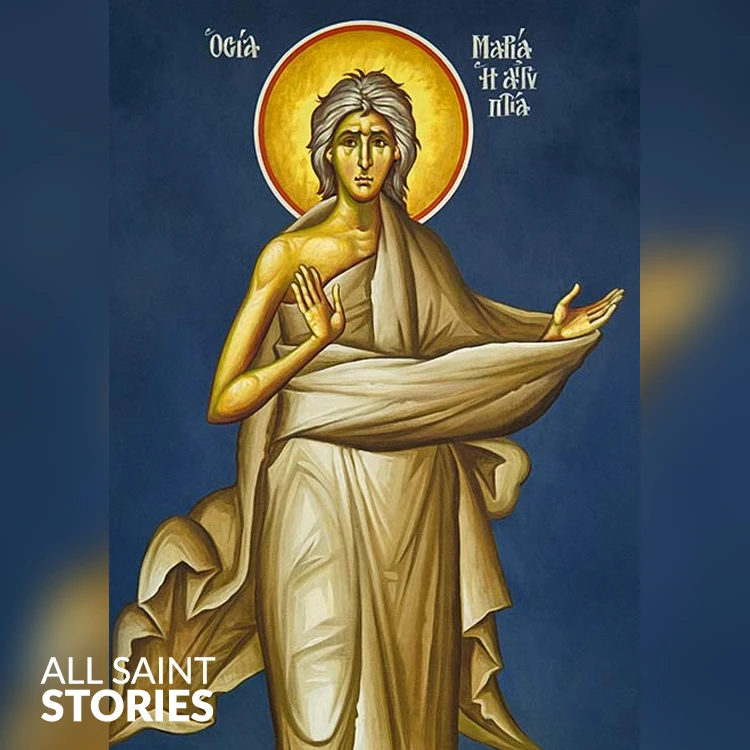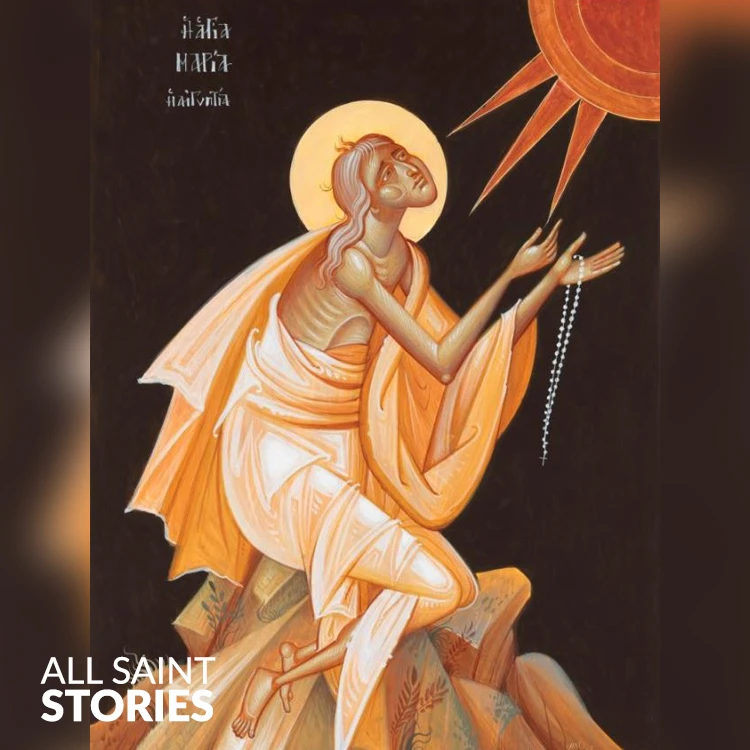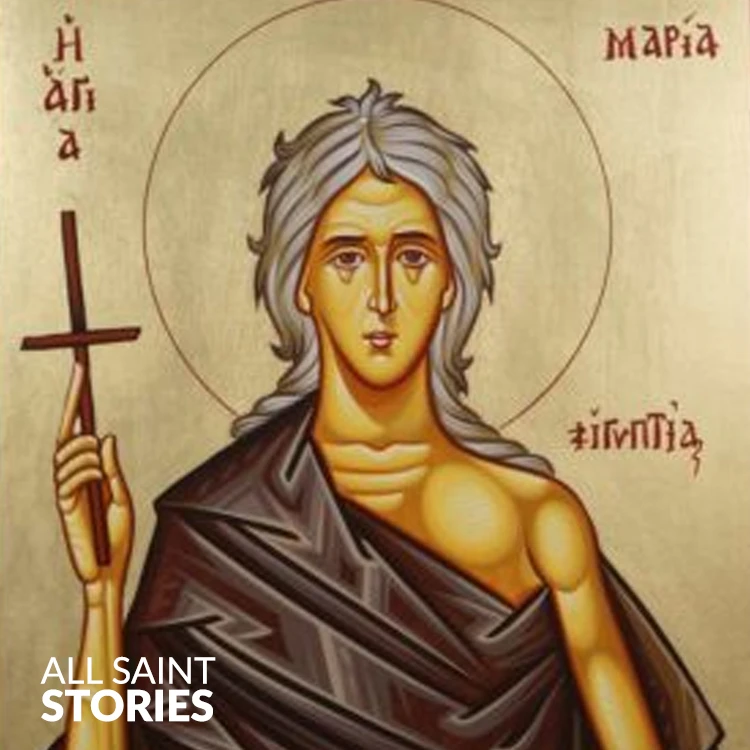"Saint Mary of Egypt, who overcame temptation and sin with God's grace, pray for us. Help us to turn away from our worldly desires and embrace a life of repentance, humility, and holiness. Intercede for us, that we may grow in faith, purity, and love for God. Amen."
ST. MARY OF EGYPT
ST. MARY OF EGYPT

St. Mary of Egypt was a great penitent who abandoned a sinful life to live in extreme asceticism in the desert. She is an icon of repentance and God's boundless mercy. After living for decades in solitude, she was discovered by a monk named Zosimas, who heard her story of conversion.
Mary of Egypt was born in the 4th century in Egypt. As a young woman, she lived a life of extreme immorality in Alexandria, engaging in reckless pleasure. At the age of 29, she joined a group of pilgrims traveling to Jerusalem for the Feast of the Holy Cross. She did not go for religious reasons but continued her sinful ways.
Upon reaching the Church of the Holy Sepulchre, she attempted to enter but found herself physically unable to do so, as if an unseen force was blocking her way. Struck with deep remorse, she prayed before an image of the Blessed Virgin Mary, asking for forgiveness and vowing to change her life. After making this promise, she was able to enter the church and venerate the Cross.
Mary then retreated into the desert beyond the Jordan River, where she lived for nearly 47 years in solitude. She endured extreme hardships, relying on God’s grace and consuming only what nature provided. She was discovered near the end of her life by a monk named Zosimas, who heard her confession and later brought her the Holy Eucharist. When he returned the following year, he found her body lifeless, with a note requesting burial.
St. Mary of Egypt is venerated as a model of true repentance. Her feast day is celebrated on April 1 in the Roman Catholic Church and the Fifth Sunday of Lent in the Eastern Orthodox Church.
Video Not Found
The information on this website is compiled from various trusted sources. While we aim for accuracy, some details may be incomplete or contain discrepancies.
If you notice any errors or have additional information about this saint, please use the form on the left to share your suggestions. Your input helps us improve and maintain reliable content for everyone.
All submissions are reviewed carefully, and your personal details will remain confidential. Thank you for contributing to the accuracy and value of this resource.
Credits & Acknowledgments
- Anudina Visudhar (Malayalam) – Life of Saints for Everyday
by Msgr. Thomas Moothedan, M.A., D.D. - Saint Companions for Each Day
by A. J. M. Mausolfe & J. K. Mausolfe - US Catholic (Faith in Real Life) – Informational articles
- Wikipedia – General reference content and images
- Anastpaul.com – Saint images and reflections
- Pravachaka Sabdam (Malayalam) – Saint-related content and insights
We sincerely thank these authors and platforms for their valuable contributions. If we have unintentionally missed any attribution, please notify us, and we will make the correction promptly.
If you have any suggestion about ST. MARY OF EGYPT
Your suggestion will help improve the information about this saint. Your details will not be disclosed anywhere.
© 2025 Copyright @ www.allsaintstories.com




 English
English
 Italian
Italian
 French
French
 Spanish
Spanish
 Malayalam
Malayalam
 Russian
Russian
 Korean
Korean
 Sinhala
Sinhala
 Japanese
Japanese
 Arabic
Arabic
 Portuguese
Portuguese
 Bantu
Bantu
 Greek
Greek
 German
German
 Dutch
Dutch
 Filipino
Filipino